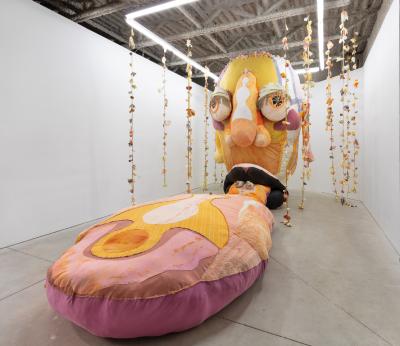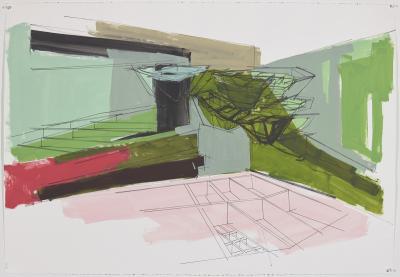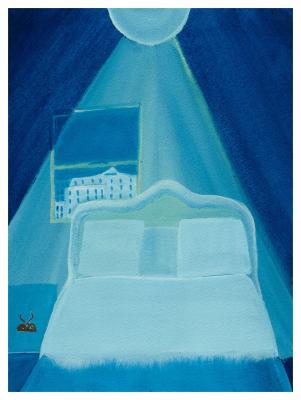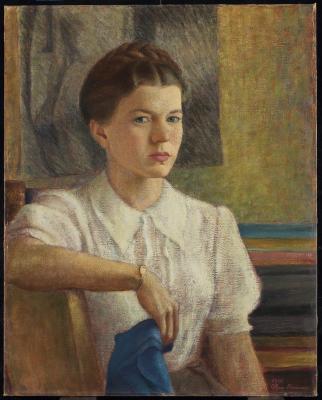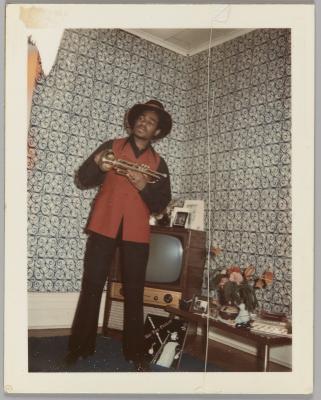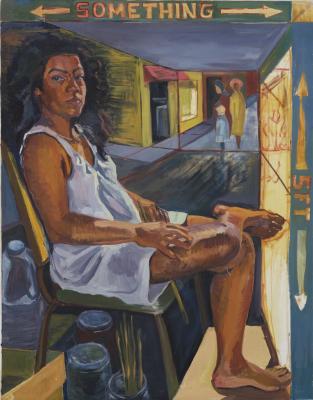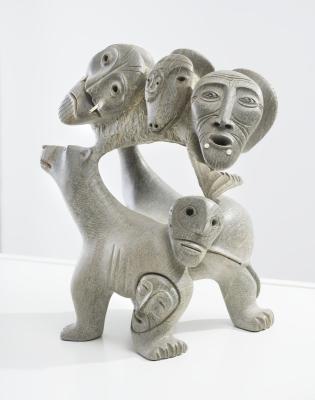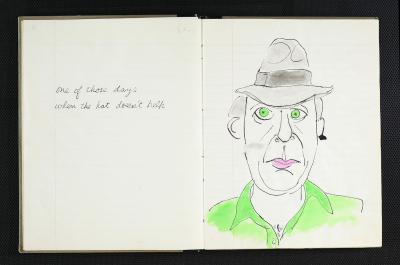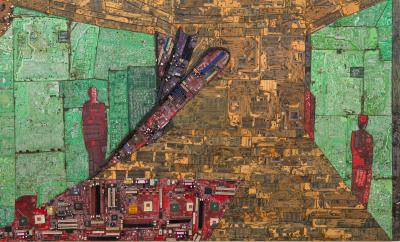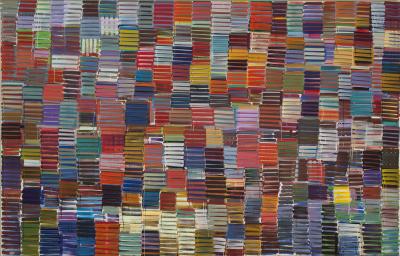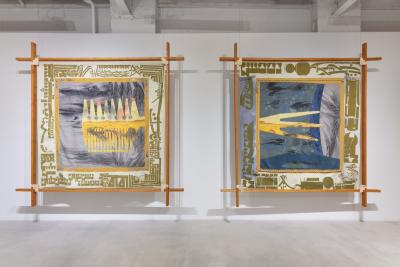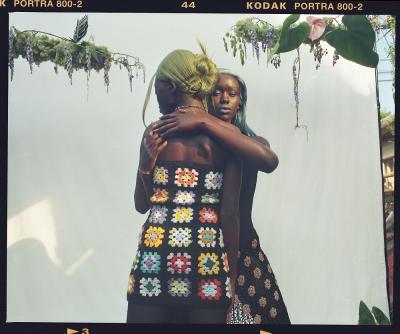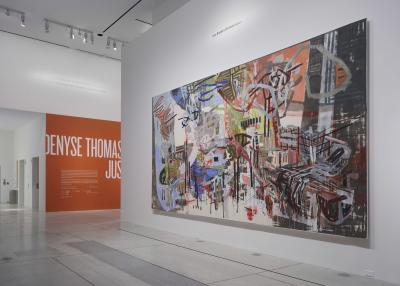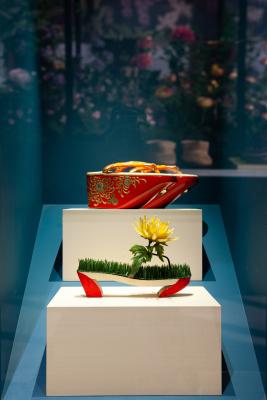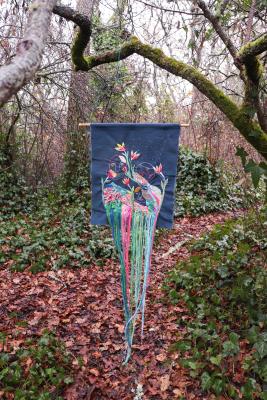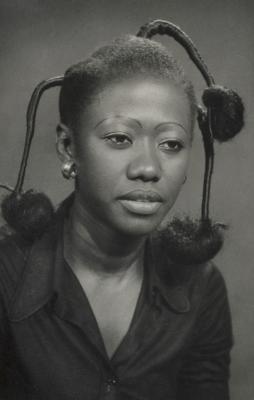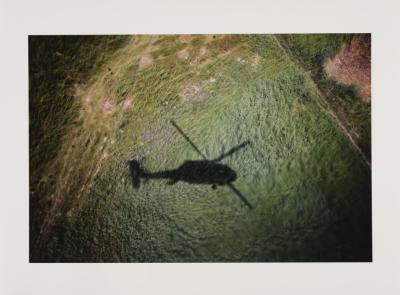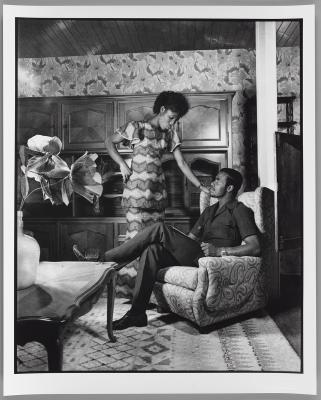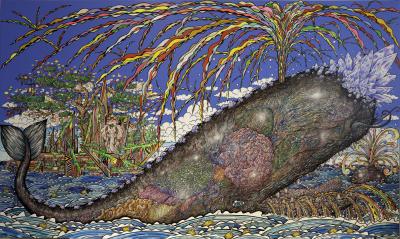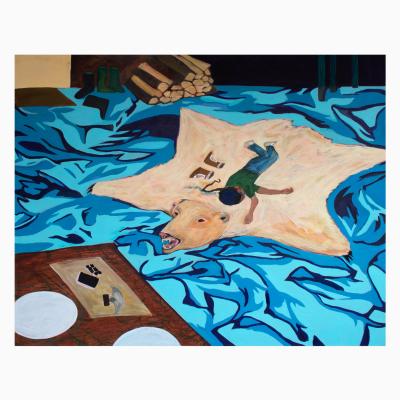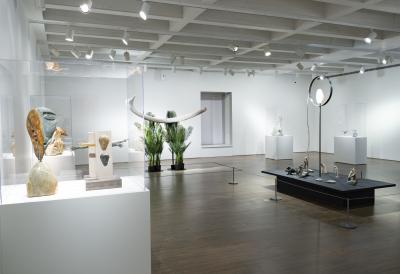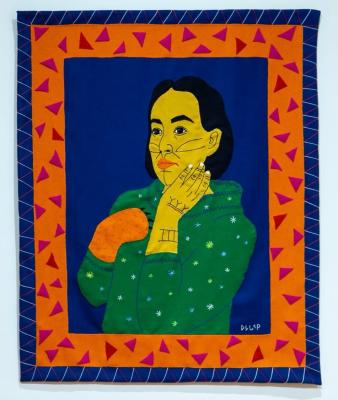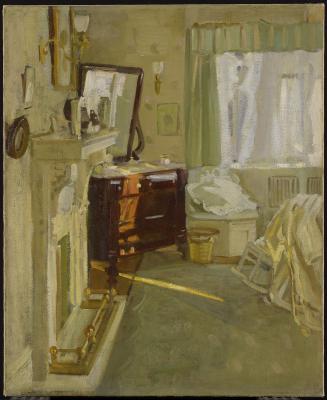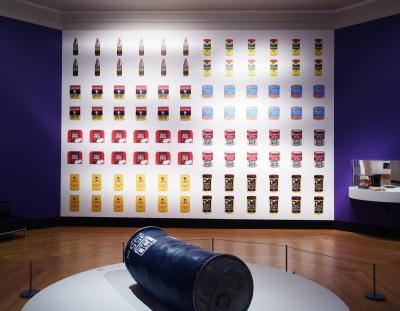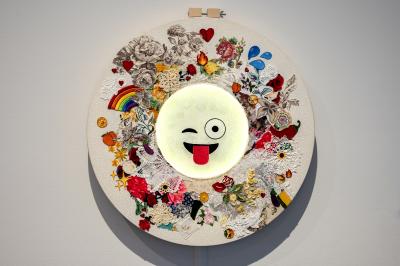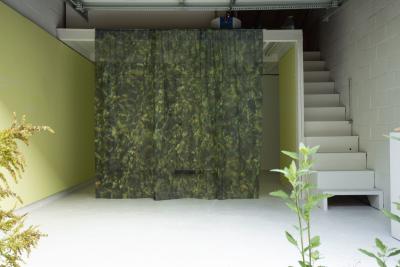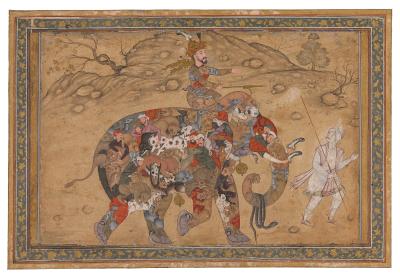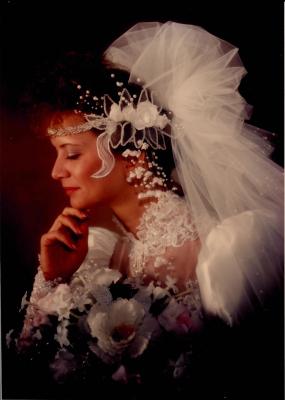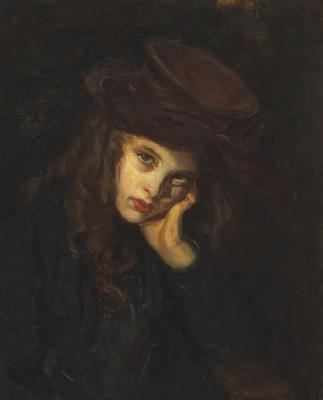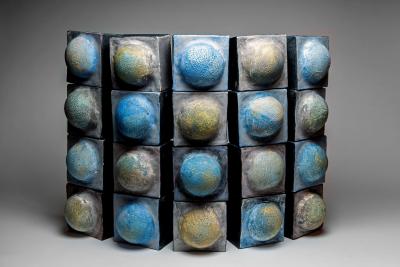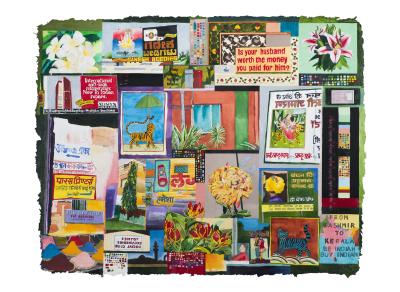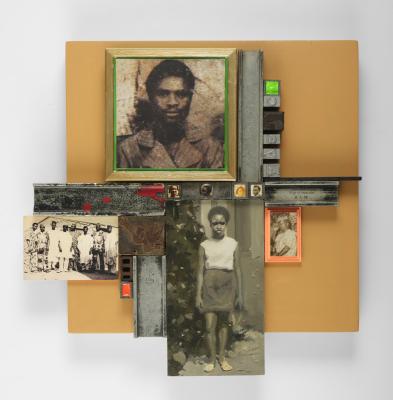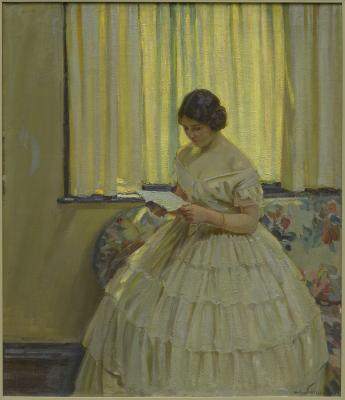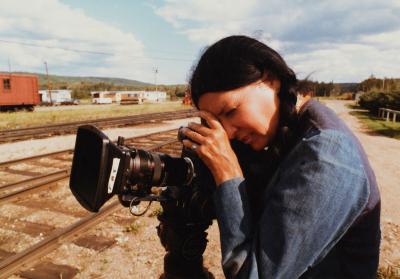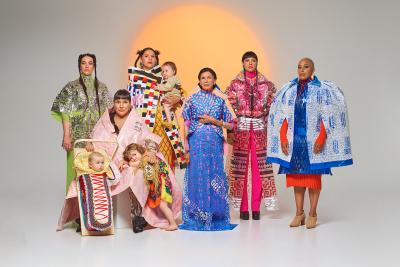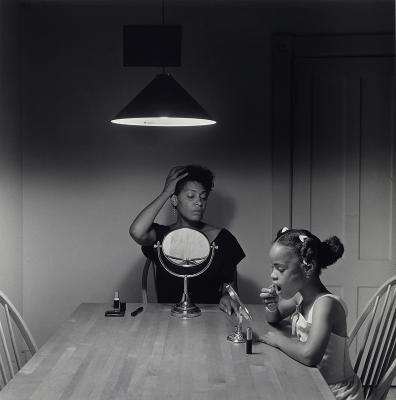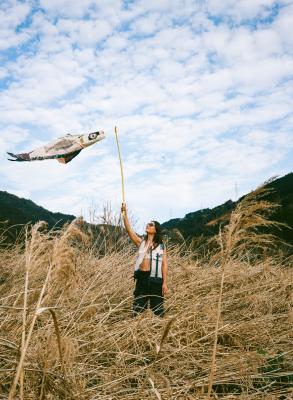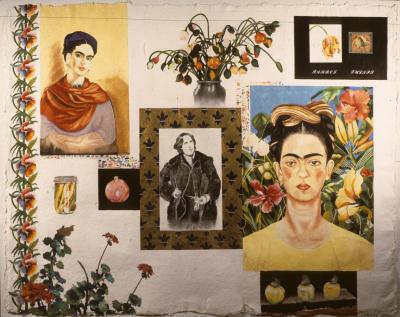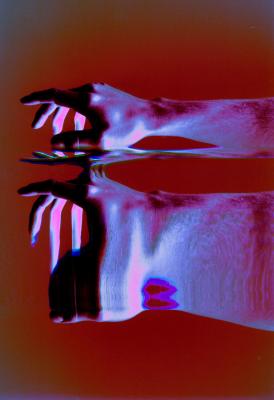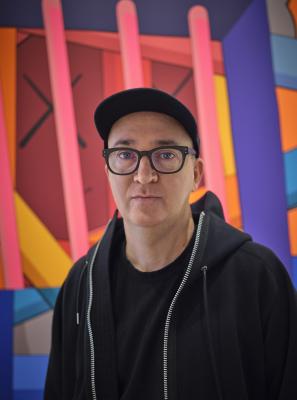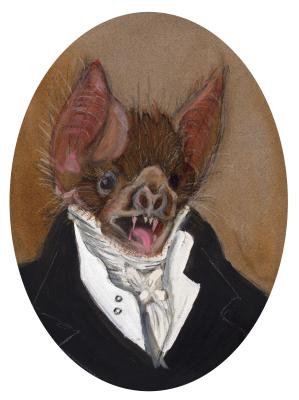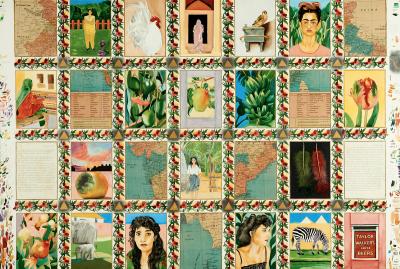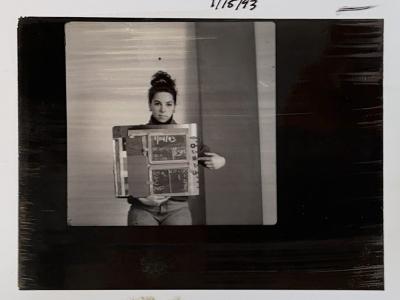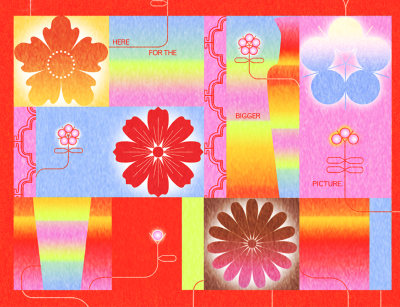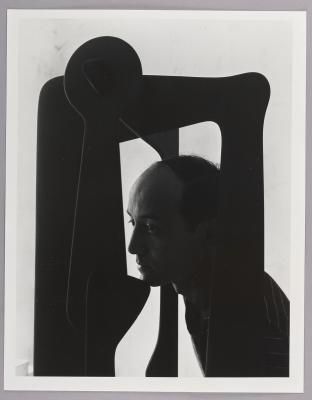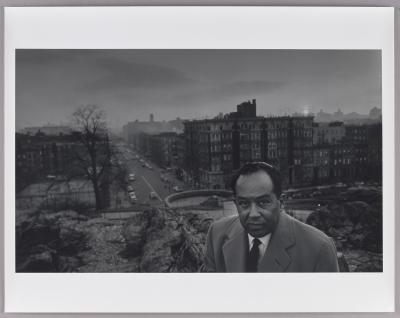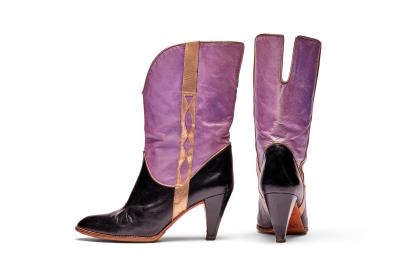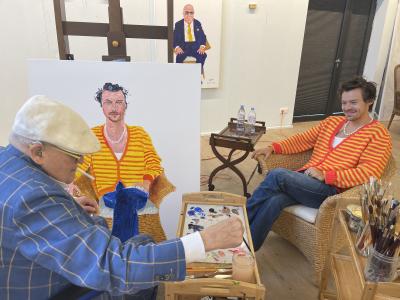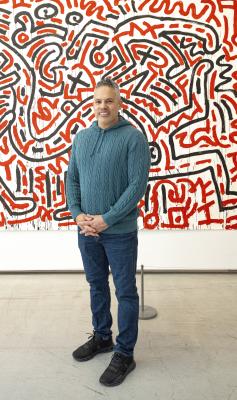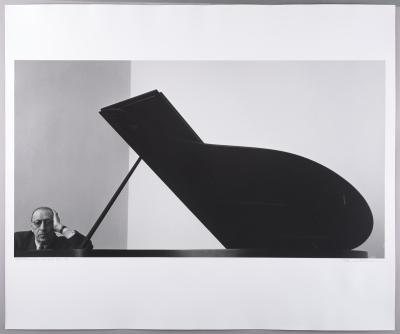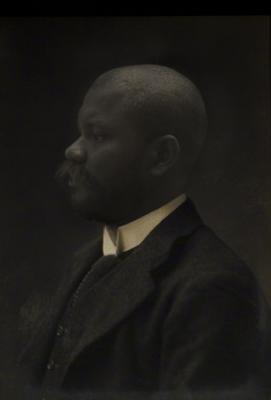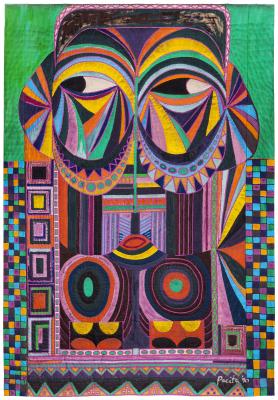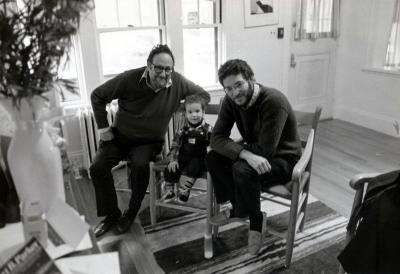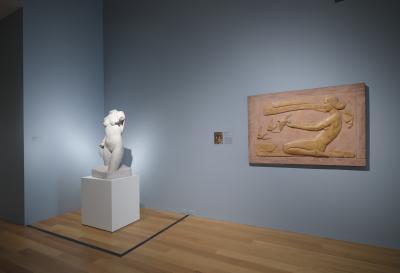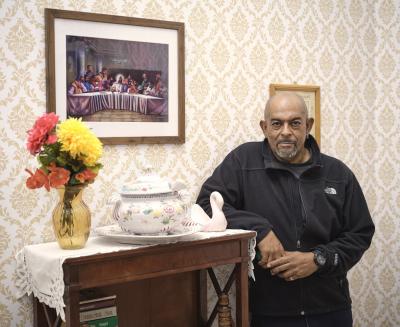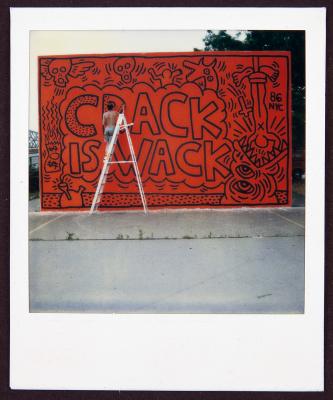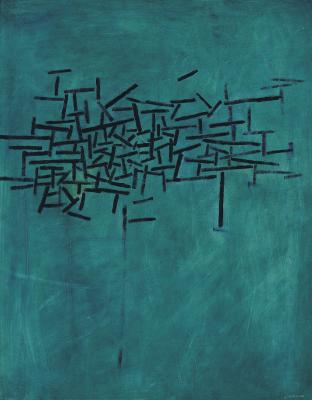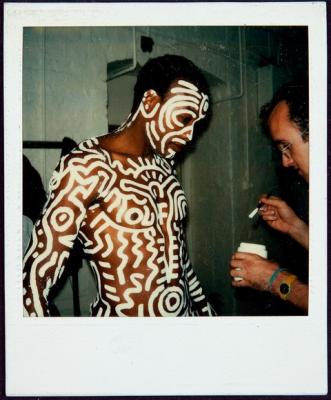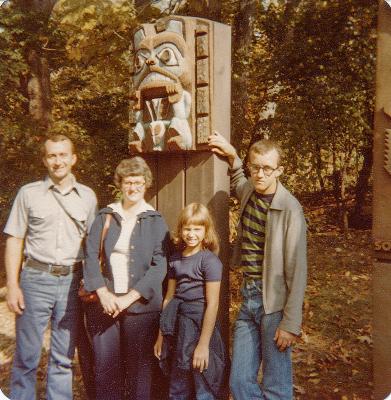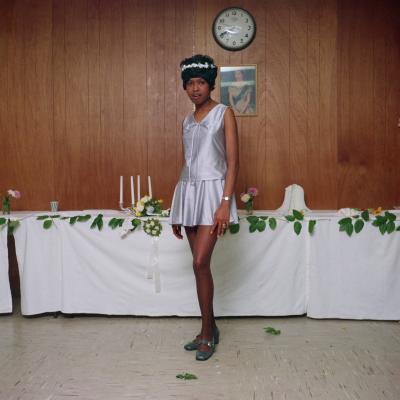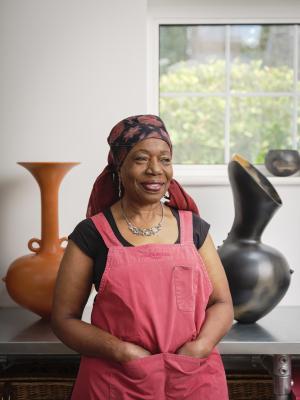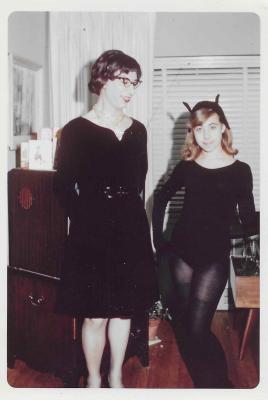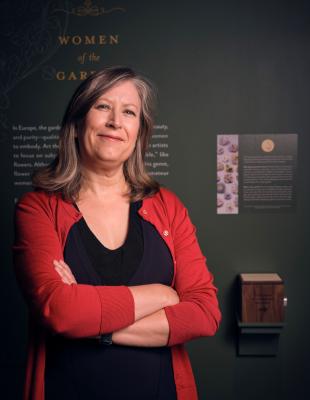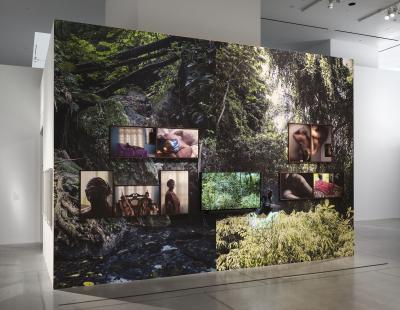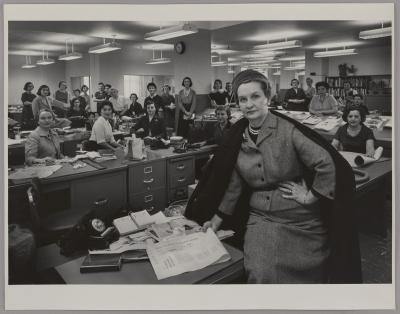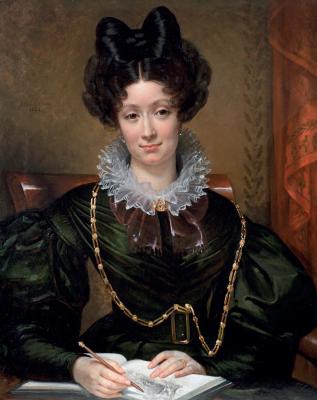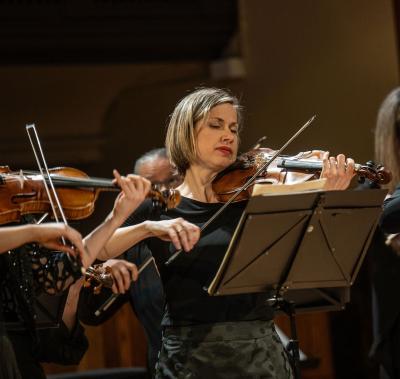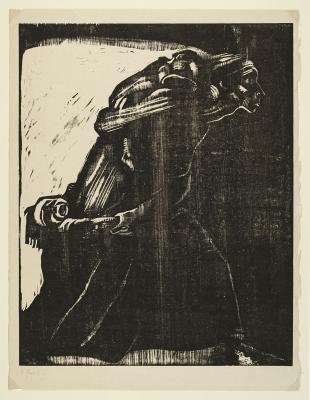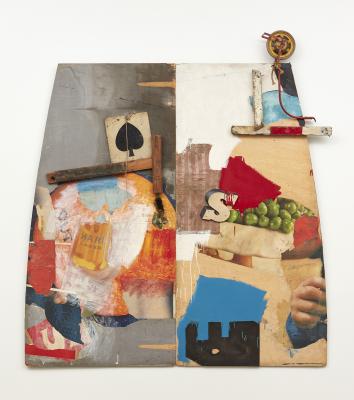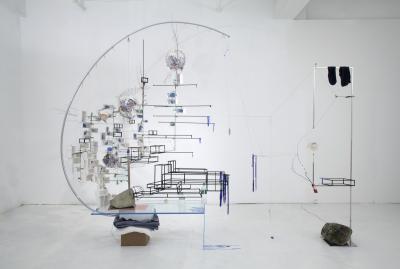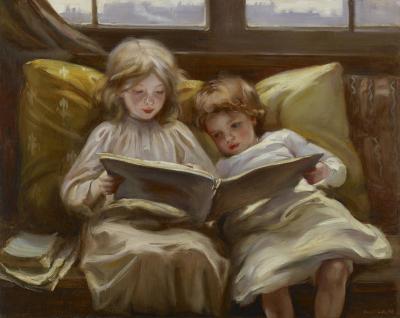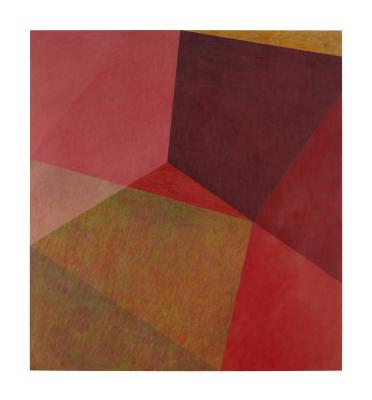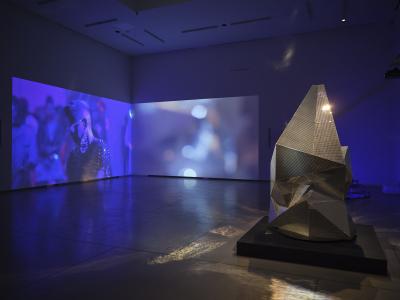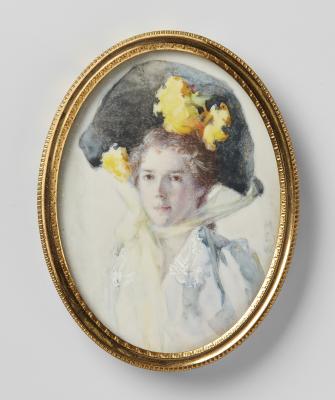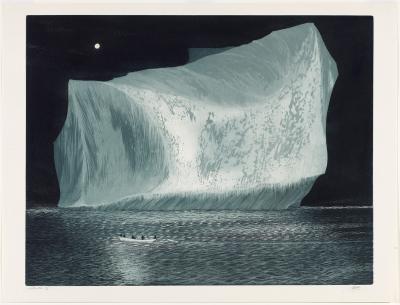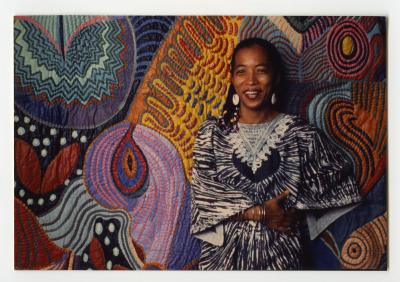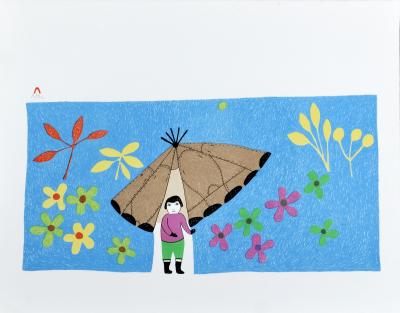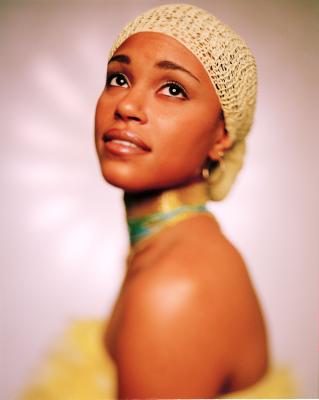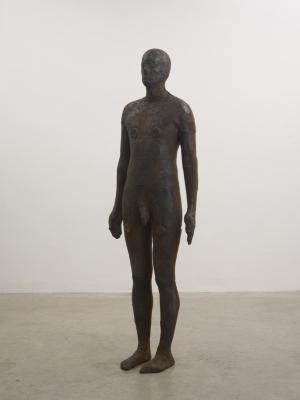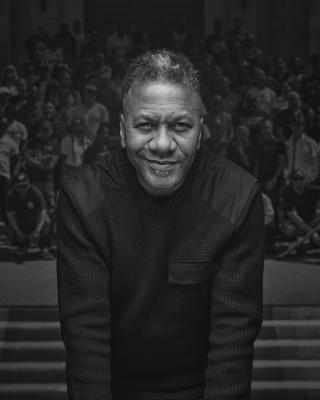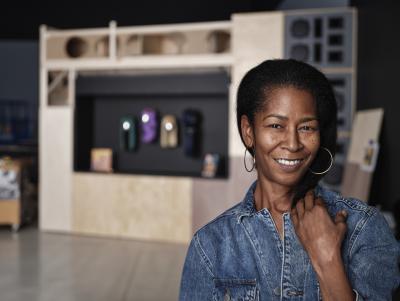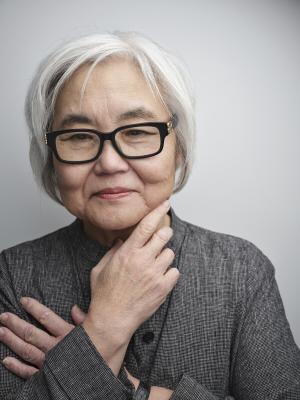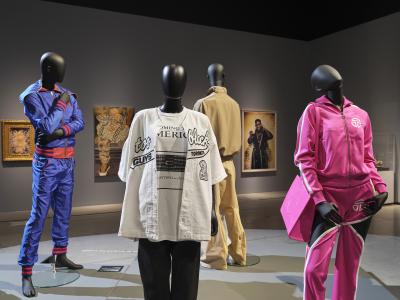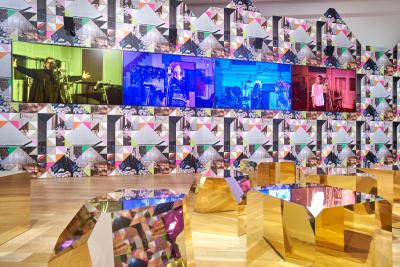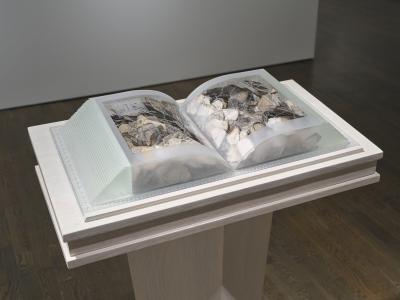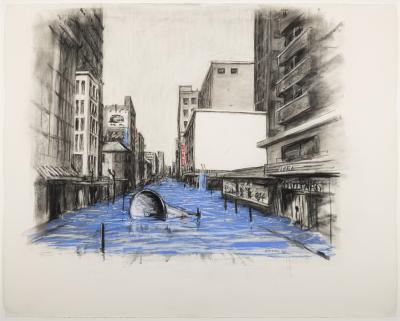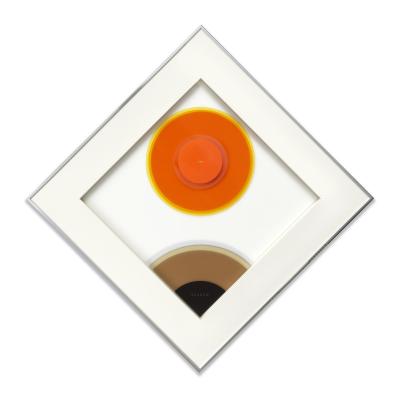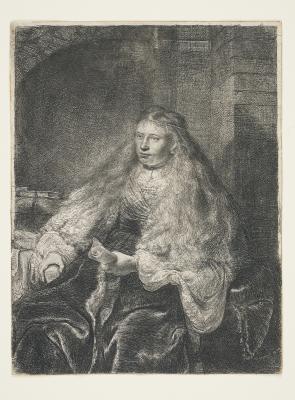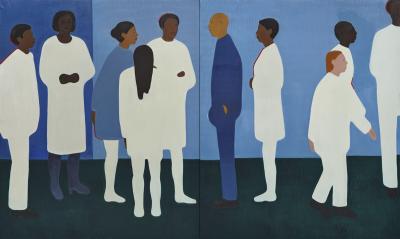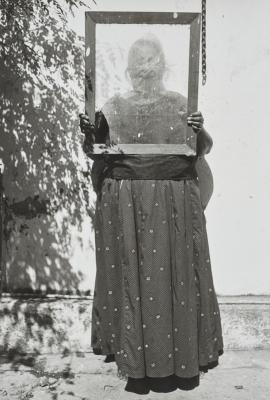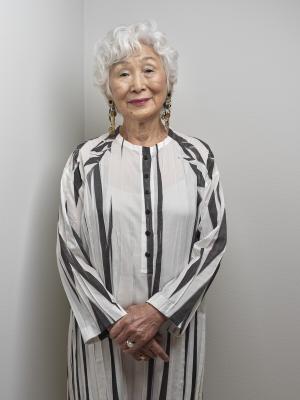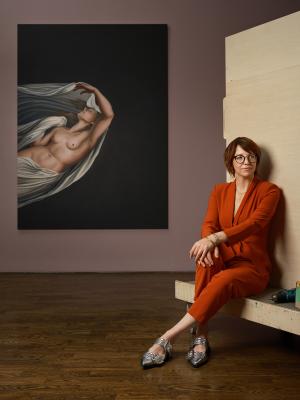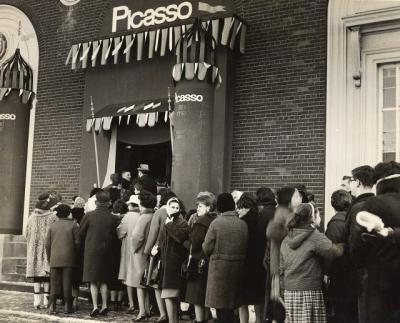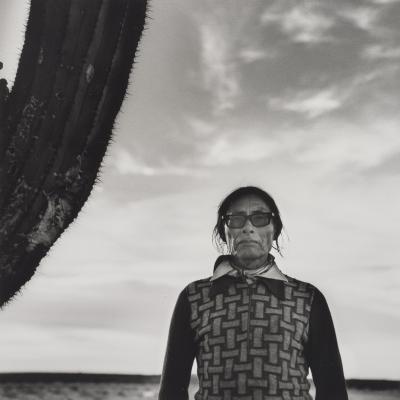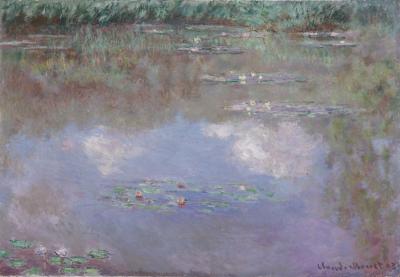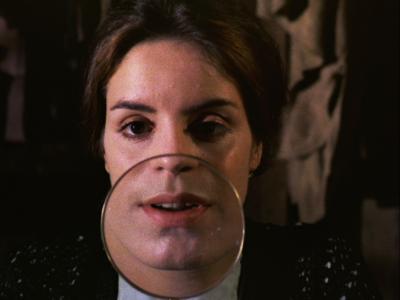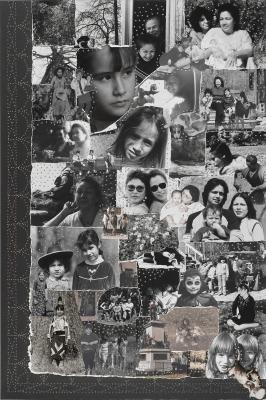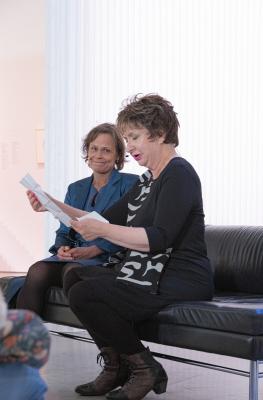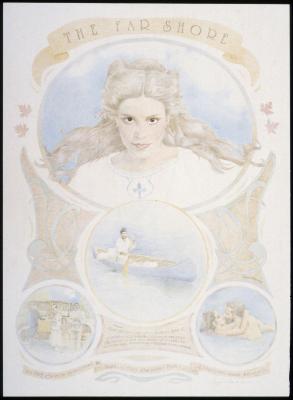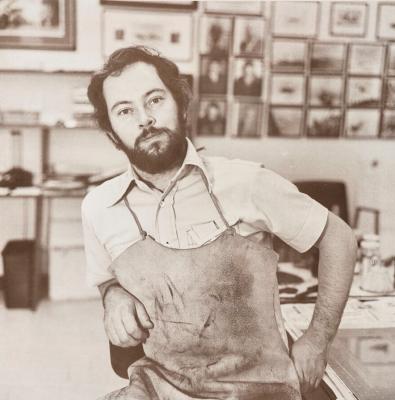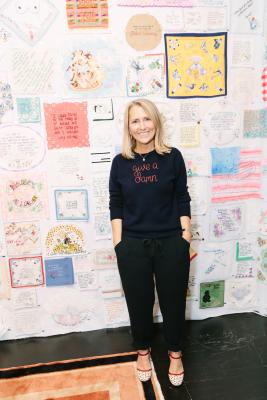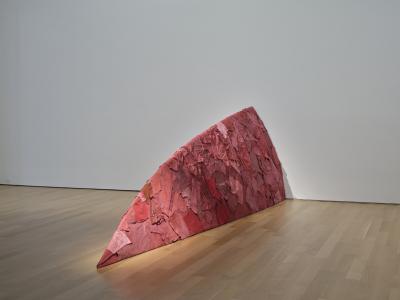
Portrait of an Artist Drawing a Landscape in her Sketchbook
Amélie Legrand de Saint-Aubin’s portrait of a fashionable sitter captures attention in Making Her Mark

Amélie Legrand de Saint-Aubin. Portrait of an Artist Drawing a Landscape in her Sketchbook, 1831. Oil on canvas, 81.8 × 65.7 cm. Art Gallery of Ontario. Purchase, with funds from the Gail and Terence Sheard Endowment Fund, 2023. Photo © Elliott Fine Art Ltd. 2023/51
This month’s RBC Art Pick is Portrait of an Artist Drawing a Landscape in her Sketchbook (1831) by the French artist Amélie Legrand de Saint-Aubin (1797-1878). This stunning portrait recently joined the AGO’s permanent collection and made its debut as part of the exhibition Making Her Mark: A History of Women Artists in Europe 1400 – 1800. The painting is one of over 230 works on display made by European women in this period. Altogether, the exhibition aims be a meaningful corrective against the belief that women artists in Europe were not common before 1800s. Read an excerpt from the exhibition’s catalogue, where editors Andaleeb Badiee Banta, Alexa Greist and Theresa Kutasz Christensen, describe their motivations for presenting Making Her Mark: A History of Women Artists in Europe, 1400-1800, the feminist art histories it builds upon, and the collaboration that made it possible.
Hung inside the gallery dedicated to Fashioning the Woman Artist, Saint-Aubin’s Portrait of an Artist Drawing a Landscape in her Sketchbook (1831) belongs to an important tradition in which women painters pictured women making art. As part of major political changes that occurred during the French Revolution, women were allowed to exhibit in the French Salon, the nation’s premier annual art exhibition, for the first time. This prompted a surge of women to seek professional art training. Women desired more representation and painted themselves and other women as artists into history through their works. Thus began a 40-year period between the 1790s to 1830s that created a fascinating trend of women depicting themselves or other women as artists in their paintings. The resulting works further emphasized their agency as women painters.
Following Saint-Aubin’s formal artistic training, she exhibited in 17 Salons over the course of her career, with primarily portraits and history paintings – two of the most popular genres at that time. Her reputation steadily grew as more people saw her work and by 1831 or earlier, she began to offer private lessons to students. The sitter in this painting could be one of her students, or a professional peer of Saint-Aubin’s.
Dressed in high fashion with a statement hair bow, the sitter in Saint-Aubin’s portrait draws a landscape in her sketchbook and pauses to look up. Rather than meet the eyes of the viewer, her gaze is off to the side, the painting likely portraying her as she copies a landscape painting into her sketchbook. Her relaxed facial expression suggests confidence through her slight smile. From the viewer’s point of view, the sketchbook is placed in the foreground of the painting – making it the closest object to us. If you look closely, you can see that her hands are covered with dust from the pencil she is using to sketch. Draped over her is also a long gold necklace called a sautoir, delicately tucked into her belt, carefully placed so it does not get in the way of her sketchbook. The intentional placement of her necklace, sketchbook and dust on her fingers emphasize the sitter’s identity as an artist at work. Such details further instill the importance of this painting’s creation at a pivotal moment in history, when women insisted upon their representation as artists in reality and in the world they painted.
A recent acquisition for the AGO, the portrait adds to its collection of works by historical European and Canadian women. Specifically, Saint-Aubin’s painting joins significant women artists in the AGO Collection like Florence Carlyle and Mary Ann Alabaster, who all have similarly painted women artists at work as subjects. Both works are also on view at the AGO in the Richard Barry Fudger Memorial Gallery (gallery 215) on Level 1.
Making Her Mark: A History of Women Artists in Europe, 1400–1800 is co-organized by the Art Gallery of Ontario and the Baltimore Museum of Art. The AGO presentation is on view on Level 2 through July 1. The exhibition is co-curated by Dr. Alexa Greist, AGO Curator and R. Fraser Elliott Chair, Prints & Drawings and Dr. Andaleeb Banta, BMA Senior Curator and Department Head, Prints, Drawings & Photographs.

